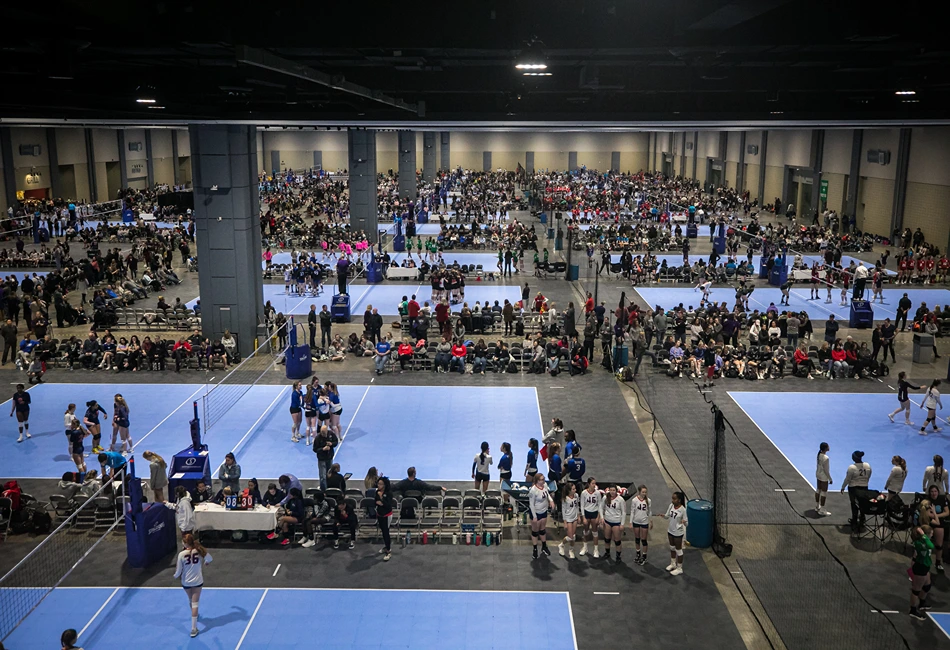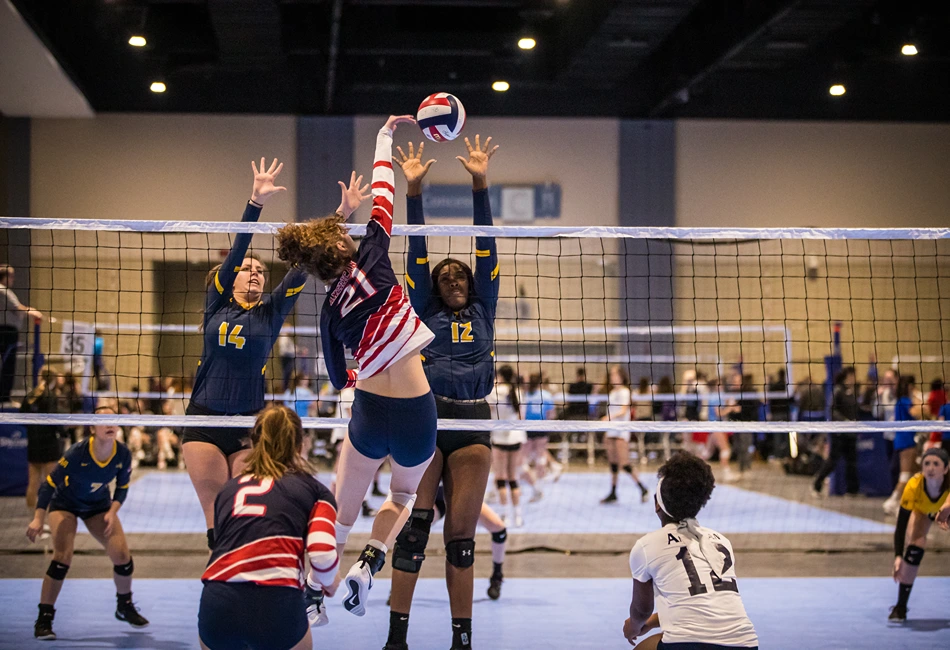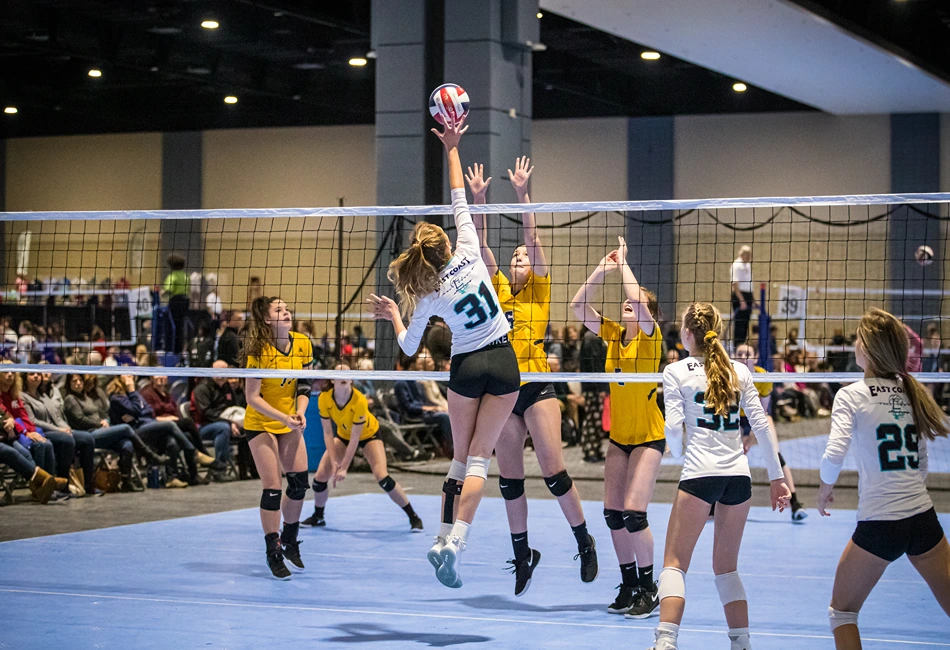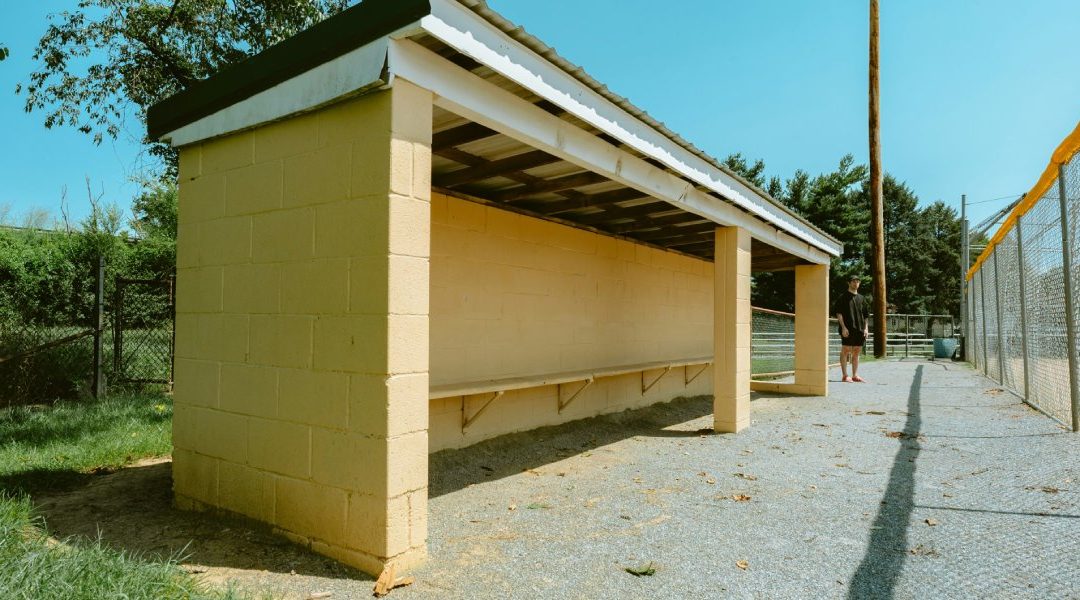Volleyball is Enjoying a Participation Boom
The sport of volleyball originated in1895 by combining a basketball and a tennis net to create a new game. Fast forward to the present day, and it’s evident that volleyball has skyrocketed in popularity, becoming a staple sport for youth and adults alike in the United States. Volleyball isn’t just incredibly popular; it’s also experiencing some of the most significant growth numbers ever seen in the sport.
For more updates on sports and facilities, be sure to Download our Where2Play Indoors Facility Guide for FREE and Subscribe to Sports Planning Guide for FREE and get even more tips, news and information for sports tourism.
On the club side of volleyball, during the 2022–23 season, USA Volleyball reported that they witnessed a remarkable 9.6% surge in membership, reaching a total of 408,000, marking the most substantial percentage growth since 1998. What’s even more impressive is that this growth isn’t confined to any specific demographic; it’s across the board. Junior women’s membership saw a 9.2% increase, junior men’s membership surged by 9.7%, and adult membership experienced a 11.6% rise.
The school side of volleyball also boasts impressive participation numbers. According to the most recent High School Athletics Participation Survey by the NFHS, volleyball ranks as the number one girls’ team participatory sport in both high school and college. Moreover, while not yet matching the same popularity as girls’ volleyball, boys’ high school volleyball participation has seen substantial growth, increasing by 40% since 2017 as reported by USA Volleyball.
“We are currently seeing participation in youth [as well as] high school levels that are at an all-time high,” said Jordan Miller, North Central College Women’s Volleyball coach. “Volleyball is a sport that is continuing to grow in a very competitive field. With camps, youth clubs and high schools, we see a very saturated market that is filled with a wide variety of talent.”

Serving Up Success: The Growth of Volleyball
As participation numbers soar, the sport itself continues to grow and gain popularity. NCAA collegiate volleyball reached new heights in 2023, as the NCAA Division I Women’s Volleyball Championship shattered the all-time collegiate volleyball attendance record for an indoor venue, drawing an impressive crowd of 19,727 fans. That match was the first NCAA volleyball championship to ever be broadcast on ABC, attracting an average of 1.7 million viewers. This match also set a TV viewership record as the most-watched NCAA women’s volleyball match in history, marking a remarkable 115% increase from the viewership of the previous year’s championship match. Earlier in that season, the Nebraska Cornhuskers Women’s Volleyball team made history by breaking the attendance world record for any women’s sporting event. A staggering 92,003 fans gathered at Nebraska’s football stadium to witness the match.
Youth volleyball tournaments as well have grown exponentially over the years, evolving into massive events that significantly benefit the surrounding areas.
“Many of these tournaments draw 2,500 to 5,000 athletes and spectators to their local area for the event,” said Carey Lingenfelter, director of Ozark Juniors Volleyball Club. “The economic impact of these overnight stays is a tremendous boost to local economies. [Our club hosts] six weekend events in Northwest Arkansas in 2024 with more demand projected in upcoming years.”
For some Volleyball facility ideas and recommendations, be sure to read our article on Top-Notch Volleyball Courts
Hinders to Volleyball’s Growth
As youth volleyball events continue to grow, the challenge lies in finding indoor facilities capable of accommodating 350+ teams. Unlike outdoor sports complexes like soccer or softball fields, constructing new indoor facilities suitable for hosting large-scale volleyball events comes at a much higher cost, and it seems the growth of youth volleyball is outpacing the development of new facilities.
“Volleyball does have to compete with other sports, such as basketball, for court availability,” said Seagan Morrow, sports sales manager at Visit Bentonville. “If communities lack the adequate facilities or if existing facilities are overbooked, it can restrict participation.”
Carey Lingenfelter also cited facility availability as a key factor limiting volleyball’s growth saying that “the lack of large sport facilities that have the capacity to serve 2,500 spectators or more and the availability to schedule multiple events annually hinders growth, as well as the shortage of regional volleyball referees.”

Volleyball Offers Numerous Post-Graduation Ways to Stay Involved
Currently, there are two professional volleyball leagues: Athletes Unlimited and the Professional Volleyball Federation, with another league, League One Volleyball, set to launch in 2025. These leagues provide highly competitive opportunities for athletes and fans alike, extending the sport’s reach beyond college. Additionally, recreational adult participation in volleyball is thriving, with numerous avenues available to enjoy the sport.
“After college participation, there are many options for players to stay involved in adult recreational leagues,” said Miller. “This includes indoor, sand, grass and even mud volleyball. Programs can be found all over the country for all ages to enjoy.”
A unique thing about volleyball is that it has different variations of the game, depending on the terrain. Beach volleyball in particular has surged in popularity, even becoming its own NCAA sport in 2016. With the demand for indoor volleyball facilities on the rise, there’s also a growing desire for indoor beach facilities, catering to both youth and adult players and enabling year-round play.
In charting volleyball’s journey from its humble beginnings to its current status as a powerhouse sport, the evidence of its popularity is irrefutable. The surge in participation numbers, spanning across various demographics, illustrates a sport that resonates deeply with both the youth and adults of the United States. As volleyball reaches new heights in terms of viewership, attendance records and economic impact, it’s clear that its growth trajectory is only bounded by the suitable facilities needed to sustain its momentum.
For more updates on sports and facilities, be sure to Download our Where2Play Indoors Facility Guide for FREE and Subscribe to Sports Planning Guide for FREE and get even more tips, news and information for sports tourism.
By Nichole Kiddy





